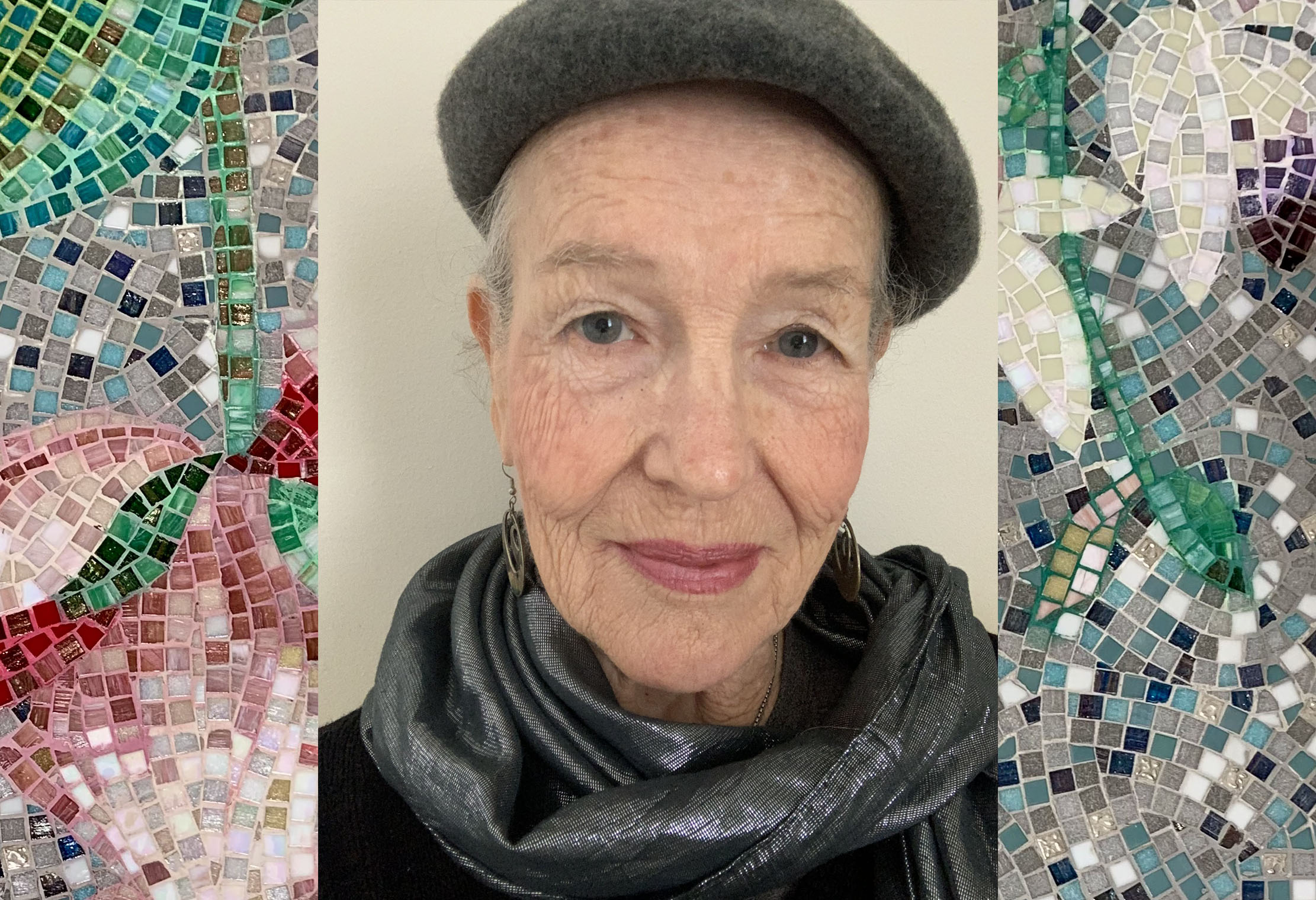 Sarah Izard-Podolski
Sarah Izard-Podolski There is simply no other way to describe Sarah Izard-Podolski’s life and art other than eclectic. Her portfolio includes murals at Jewish day schools and synagogues, recreating biblical scenes, Jewish symbols, or Hebrew writings. She also made a name for herself as a restoration artist who worked on the iconic art of Millard Sheets at the Home Savings and Loans building on Wilshire Boulevard and artist David Hockney’s mural in the swimming pool at the Roosevelt Hotel.
Most recently, she worked on a mosaic wall in a Pico-Robertson mikvah. It was initially designed with computer assistance, but she faced a series of challenges during its execution. Despite meticulous planning, the installation faltered, resulting in sagging and loose stones.
Izard-Podolski drew upon her expertise gained from restoring mosaic murals and the result is a design of flowers and hummingbirds cascading down the wall. Employing a technique learned through her previous experiences, she stained the grout to match the stones, enhancing the overall imagery and colors.

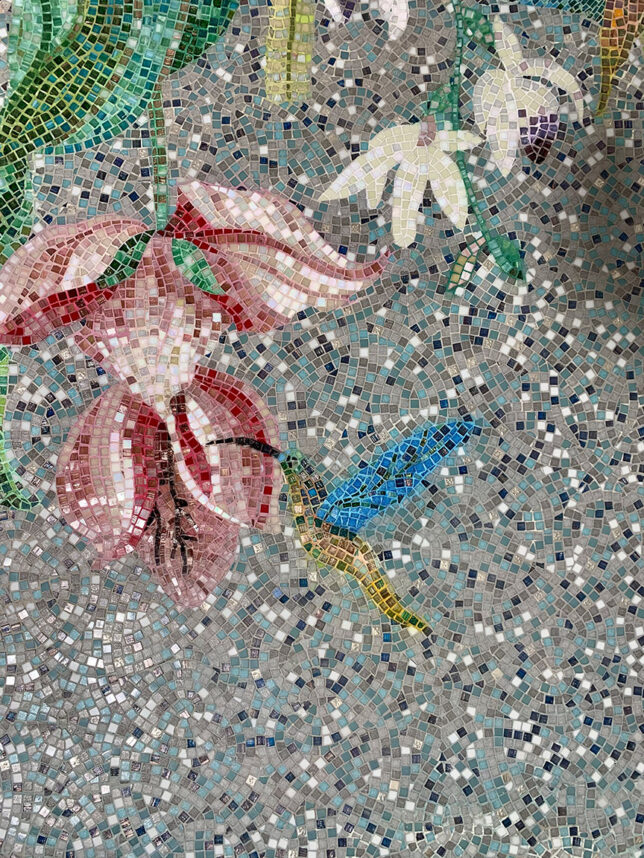
The artist describes herself as Orthodox, but she wasn’t always observant. In fact, she wasn’t even raised Jewish. The decision to convert to Judaism came after she had divorced her second husband, the father of her youngest daughter.
“I had a studio in Venice, right next to the Bay Cities Synagogue, which later became the Pacific Jewish Center,” she said. “From my studio, I could observe the Jewish community. I watched Simchat Torah celebrations, the bride and groom on their way to the chuppah. Every Shabbat, men, women and children were walking down the boardwalk dressed nicely, waiting for the sunset to welcome the Shabbat and I was very impressed by that. I remember watching Michael Medved and Rabbi Daniel Lapin walking down the boardwalk and into the shore. They had their Torah dancing for some weddings, and it was so beautiful.”
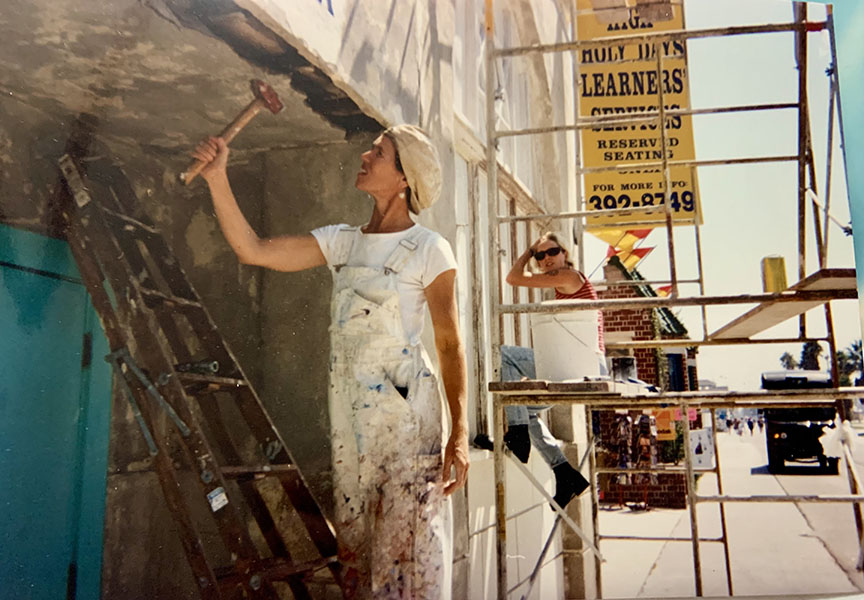
These scenes across the street sparked something inside her. Perhaps it was her longing to belong, to feel a part of a community and break the loneliness of living far away from her family back in England. She also wanted to raise her daughter, Miriam, Jewish.
“I wanted her to have a Jewish upbringing and Jewish education,” she said. “I began to go to their services and eventually became part of the synagogue.”
Soon after, she started learning Torah and Hebrew, sent her daughter to Gan Israel and began keeping kosher and Shabbat in the late ‘80s.
We took three donkeys and traveled 300 miles, meeting tribes along the way.” Izard-Podolski, who was nine years old at the time, remembers the trip well. “This was the first time I saw Israel from afar.”
Her decision to convert didn’t sit well with her British parents, who struggled to comprehend her unconventional life choices. Her father, Ralph Izzard, was an established journalist for the British Daily Mail and spent most of his career in the Middle East, where Izard-Podolski also grew up along with her three siblings. Her mother, Molly Izzard, was a writer who published five books, among them “Smelling the Breezes,” which was published in the United States under the title “A Walk in the Mountains.” The book, which she co-wrote with her husband, chronicles the family camping trek in the High Lebanon mountains in 1957. “We were about to move back to England and my parents decided to travel before we leave,” Izard-Podolski said. “We took three donkeys and traveled 300 miles, meeting tribes along the way.” Izard-Podolski, who was nine years old at the time, remembers the trip well. “This was the first time I saw Israel from afar,” she said. “I remember my father pointing at the Hermon mountains, telling me: ‘You see, over there is Israel.’”
Her father was known as an adventurer. During World War II he served as a Naval Intelligence Officer for the British Royal Navy and was part of the 30 Assault Unit under the command of Ian Fleming. He would later base some character in his James Bond books on Izzard, borrowing also from his real-life experiences. In his first novel “Casino Royale,” he described how Bond found himself playing poker against a covert Nazi intelligence agent, something that indeed happened to Izzard. Another writer, Tom Stacey, fictionalized him in the book “The Man Who Knew Everything,” which was later adapted to a feature film “Deadline” (1988) starring John Hurt.
“My father’s first post was Berlin where he was appointed as bureau chief,” said his daughter. “So, when World War II broke, he joined the Royal Navy Volunteer Reserves as a gunner and eventually became Lieutenant Commander in position with British Naval Intelligence. Like Fleming, he also attended Cambridge. This, along with the fact that he spoke German fluently, made Fleming decide to recruit him to his unit.”
By the time she turned nine, Izard-Podolski had lived in Egypt, Cyprus and Lebanon, wherever her father was stationed. The children were used to the nomadic family life. After they returned to England, her father moved by himself to Bahrain and saw his family during summers. His wife used to travel to Bahrain in the cold British winters. He stayed there for 17 years becoming the first journalist to cover the Arabian Gulf.
One would think that these two adventurous parents would understand their daughter’s decision to choose a life less ordinary, but they didn’t. “They disapproved of my decisions from the start,” Izard-Podolski said, “from my decision not to attend a prestigious acting school I was accepted to, to my decision to take my baby daughter and travel to India when I was 21. I traveled from ashram to ashram and learned the four keys meditation.”
After close to a year of traveling, she returned to England and reunited with her husband, Peter. The couple then decided to move to the U.S. “This was another blow because my mom felt that I’m getting away from them and she won’t be able to enjoy her granddaughters,” she said.
The young family settled in Los Angeles in 1973 and Izard-Podolski soon found work as Tony Bennett’s au pair to his daughter Antonia. “They wanted a British nanny and I’m also a macrobiotic cook, something I learned in India, which they liked,” she said.
Her stint as a nanny/cook didn’t last long, nor did her marriage. Peter moved back to England and she met Richard Levy, who soon became her second husband and the father of her daughter, Miriam. He taught her the hard-edge acrylic line technique which is used also by Israeli artist Yaacov Agam, but this marriage didn’t last either, and she became a single mother of two.
The life of a struggling artist was anything but romantic. She resisted her parents’ pleas for her to return to England. With a little financial help from them and selling her art, she managed to make ends meet. After her conversion to Judaism and adopting a religious lifestyle, she sent her daughter to Camp Gan Israel in Santa Monica and then to Yavneh. When her daughter turned 13, she sent her to Israel to learn Hebrew.
“Richard’s mother was thrilled,” she said. “Most of their family had assimilated and it was important for her that her granddaughter would be raised Jewish. Miriam was supposed to stay In Israel for a short time, but her ‘adoptive’ Israeli family there persuaded me to let her stay. They have five daughters, and she became the sixth. They were very careful to include me in everything. They sent me Rosh Hashanah cards each year and I would come and visit her.” She is now married, living in Yeruham, in the south of Israel, and has five children.
Izard-Podolski, who is married for the third time, said she isn’t doing art to become wealthy but to enrich her soul and to have people inspired by it. “I don’t ask for exuberant prices,” she said. “I feel it’s a mitzvah to do what I’m doing and it’s a privilege. I do art to help remind people who they are as Jews, from painting Simchat Beit Hashoava and Beit Hamikdash (Holy Temple) at Or Ha’emet synagogue to painting Hebrew lettering and calligraphy on the Aron Hakodesh (Holy Ark) at Torat Hayim synagogue. People tell me it touches their hearts when they look at my art and it helps me redeem my life.”
Sarah Izard Podolski instagram: Artzyisrael






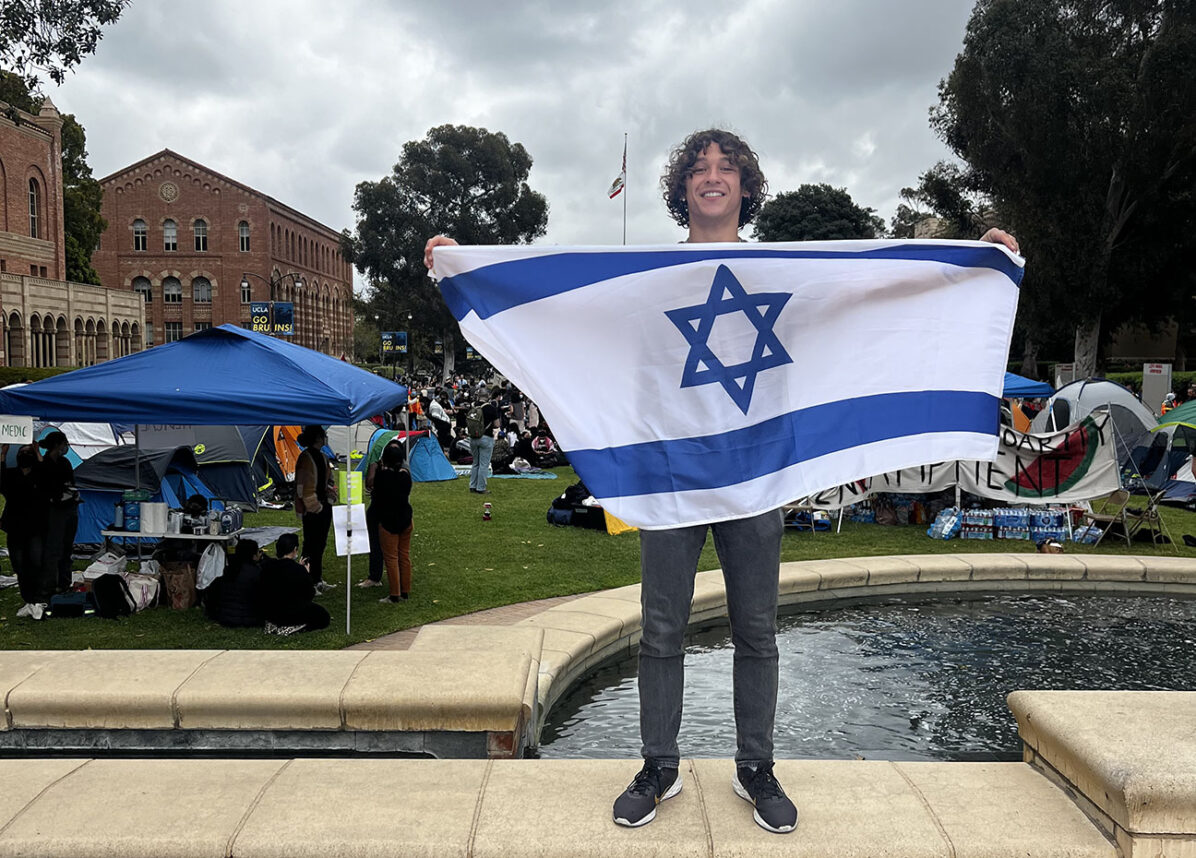

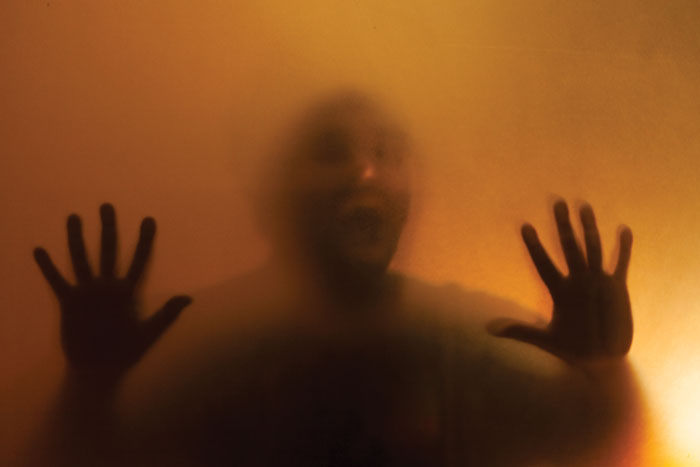
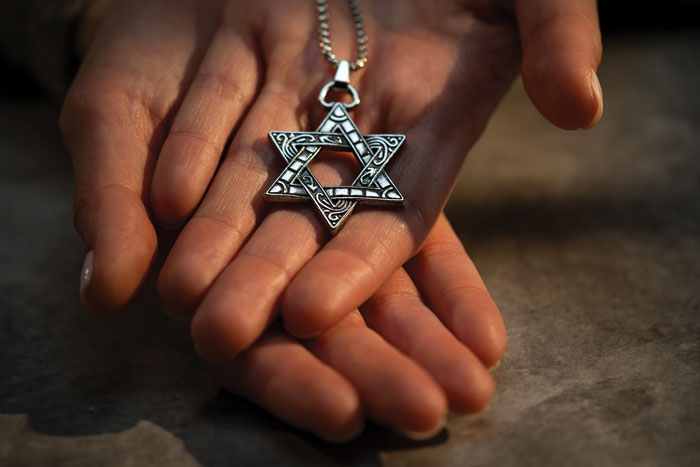

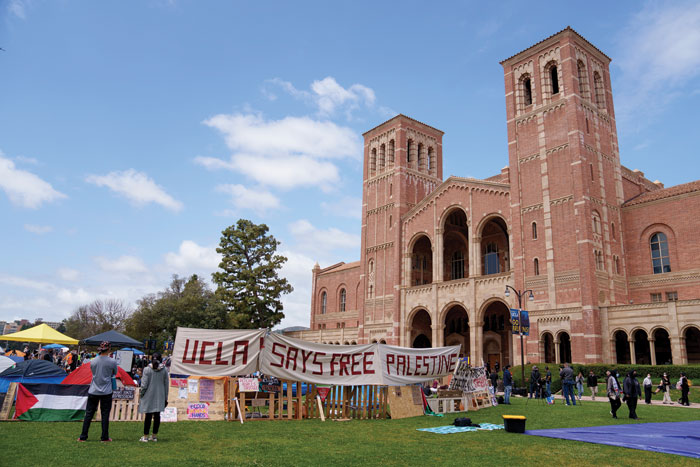


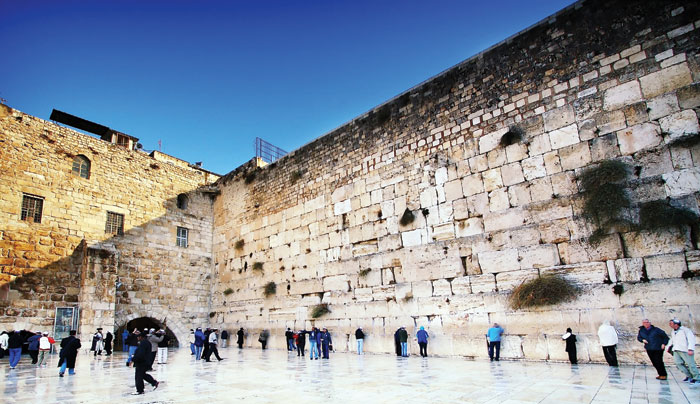
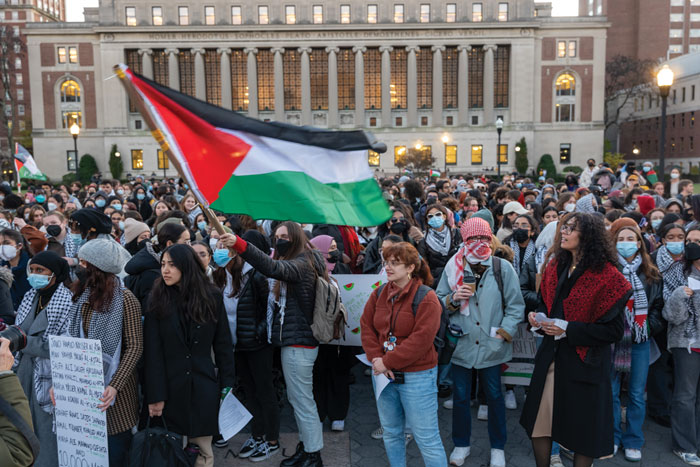
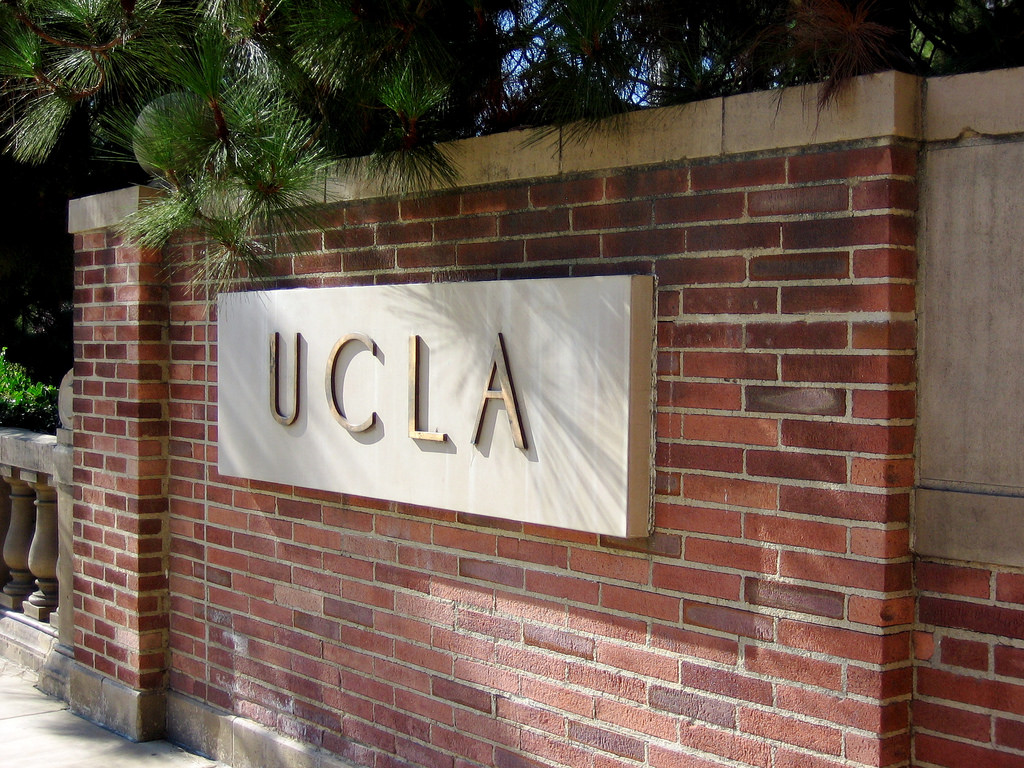





 More news and opinions than at a Shabbat dinner, right in your inbox.
More news and opinions than at a Shabbat dinner, right in your inbox.